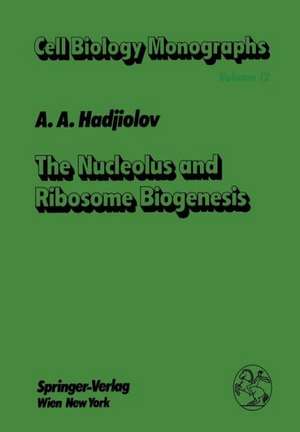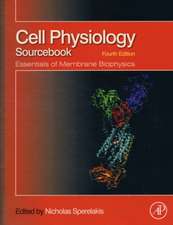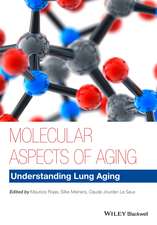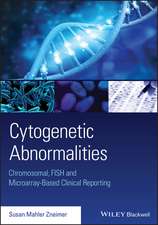The Nucleolus and Ribosome Biogenesis: Cell Biology Monographs, cartea 12
Autor A.A. Hadjioloven Limba Engleză Paperback – 30 dec 2011
Preț: 389.70 lei
Nou
Puncte Express: 585
Preț estimativ în valută:
74.59€ • 81.05$ • 62.70£
74.59€ • 81.05$ • 62.70£
Carte tipărită la comandă
Livrare economică 21 aprilie-05 mai
Preluare comenzi: 021 569.72.76
Specificații
ISBN-13: 9783709187449
ISBN-10: 3709187443
Pagini: 284
Ilustrații: XII, 272 p.
Dimensiuni: 170 x 244 x 15 mm
Greutate: 0.45 kg
Ediția:Softcover reprint of the original 1st ed. 1985
Editura: SPRINGER VIENNA
Colecția Springer
Seria Cell Biology Monographs
Locul publicării:Vienna, Austria
ISBN-10: 3709187443
Pagini: 284
Ilustrații: XII, 272 p.
Dimensiuni: 170 x 244 x 15 mm
Greutate: 0.45 kg
Ediția:Softcover reprint of the original 1st ed. 1985
Editura: SPRINGER VIENNA
Colecția Springer
Seria Cell Biology Monographs
Locul publicării:Vienna, Austria
Public țintă
ResearchCuprins
I. Introduction.- II. Ribosomal Genes.- II. 1. Definitions.- II.2. Ribosomal RNA Genes.- II.4. Ribosomal Protein Genes.- II.5. Synopsis.- III. Transcription of Ribosomal Genes.- III. 1. Components of the Transcription Complex.- III.2. The Transcription Process >.- III.3. Transcription of 5 S rRNA Genes.- III.4. Transcription of r-Protein Genes.- III.5. Synopsis.- IV. Maturation of Preribosomes.- IV. 1. Structure of Primary Pre-rRNA.- IV.2. Pre-rRNA Maturation Pathways.- IV. 3. Preribosomes: Structure and Maturation.- IV. 4. Synopsis.- V. Molecular Architecture of the Nucleolus.- V. 1. Introduction.- V.2. Nucleolus Organizer.- V.3. Fibrillar and Granular Components.- V.4. The Nucleolus and Other Nuclear Structures.- V.5. The Nucleolar Matrix.- V.6. Macromolecular Constituents.- V. 7. Outline.- VI. Regulation.- VI. l. General Considerations.- VI.2. Transscriptional Control.- VI.3. Posttranscriptional Control.- VI.4. Autogeneous Regulation of Ribosome Biogenesis in Eukaryotes: A Model.- VI.5. Synopsis.- VII. Ribosome Biogenesis in the Life Cycle of Normal and Cancer Cells.- VII. 1. Nucleologenesis and Nucleololysis.- VII.2. Inhibition of Ribosome Biogenesis.- VII.3. Growth Transitions.- VII.4. Senescent and Cancer Cells.- VII.5. Synopsis.- References.




















